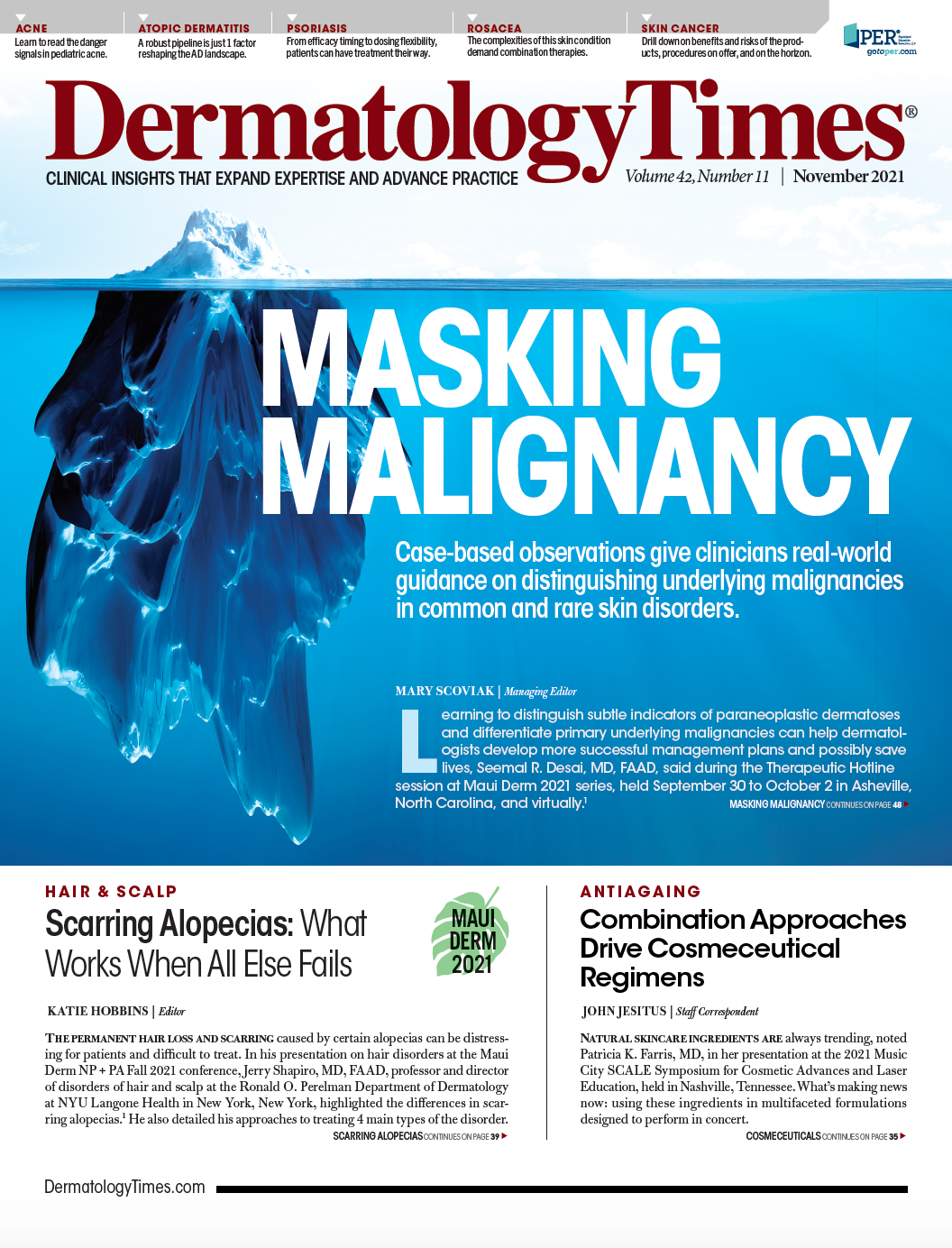- Acne
- Actinic Keratosis
- Aesthetics
- Alopecia
- Atopic Dermatitis
- Buy-and-Bill
- COVID-19
- Case-Based Roundtable
- Chronic Hand Eczema
- Chronic Spontaneous Urticaria
- Drug Watch
- Eczema
- General Dermatology
- Hidradenitis Suppurativa
- Melasma
- NP and PA
- Pediatric Dermatology
- Pigmentary Disorders
- Practice Management
- Precision Medicine and Biologics
- Prurigo Nodularis
- Psoriasis
- Psoriatic Arthritis
- Rare Disease
- Rosacea
- Skin Cancer
- Vitiligo
- Wound Care
Publication
Article
Dermatology Times
Is Your Practice’s Retirement Plan at Risk?
Mandell is an attorney and founder of the wealth management firm OJM Group in Cincinnati, Ohio. Braunscheidel is a wealth adviser at OJM Group.
Nearly all dermatology practices use qualified retirement plans (QRPs), including 401(k)s and profit-sharing, defined benefit, and hybrid plans. As part of our diagnostic work for clients, we often review such plans. Based on our experience, we have pinpointed several pitfalls that either cost the practice more in fees or subject the practice or its owners to potential liability.
Here, we identify the leading issues we have observed in dermatology practice QRPs and detail tactics for avoiding them.
Common Pitfalls
1. The practice is overpaying fees for record keeping, third-party administration, or investment advisory services.
Many QRPs are either paying far too much in fees or simply aren’t getting much in return. Fees can often be disguised in the underlying fund ratios from which the service providers are reimbursed. It is important that the trustees and practice managers overseeing these plans fully understand the plan design, the associated fees, and the role of each underlying party. A service plan that fails to monitor any of these items can expose the company to possible lawsuits.
One way to circumvent this potential service-and-fee issue is by having an independent company facilitate periodic benchmarking reviews. These reviews are compiled using third-party information to evaluate the services provided to a plan for the fees being charged and compare these details with similar plans in a benchmark group. Not only will the benchmarking review help the plan meet its fiduciary responsibility, the review also can save the company and participants money, identify substandard service providers, and improve the plan design and features.
2. A potential conflict of interest exists between the practice's third-party administrator (TPA) and the in-house investment adviser.
Despite recent technological advances and widespread access to low-cost index investing, many QRPs still include expensive mutual fund lineups or lack key elements of the major investment asset classes. A plan that has an average mutual fund expense ratio over 1% is probably paying too much.
These higher fees typically arise from an inherent conflict of interest when a plan chooses to bundle their TPA, investment adviser, and recordkeeper. (The term bundle means that all 3 roles fall under 1 company relationship.) Combined services such as these allow potential conflicts to flourish, as the investment adviser has in-house or proprietary funds to use inside the plan. The real question becomes “Is the adviser or firm paid more for having these funds inside the investment lineup?” The answer is often yes, especially when a lineup lacks considerable low-cost options.
Trustees and practice managers need to understand how each party is being paid, as that often drives behavior. This information can be obtained easily through the annual 408(b)(2) disclosure required by the Employee Retirement Income Security Act (ERISA). Transparency of fees is vital in today’s regulatory environment.
3. The plan lacks a robust investment fund lineup, or the fund lineup is too expensive.
There is a fine line between not having enough investment options and having too many. For example, including 10 large-cap value funds on the platform doesn’t make a lot of sense, considering the participants will have a difficult time choosing the one that is right for them. On the other hand, offering only 1 fund is a problem as well. As an example of a middle ground, we typically use a low-cost passive fund along with a more expensive, actively managed fund that aims to outperform the underlying index benchmark. This approach gives each participant the flexibility to choose the option that fits their comfort level. We also recommend that a plan’s fund lineup include target-date retirement funds, which can serve as a 1-stop investment option.
4. There is no cofiduciary to share potential liability for the plan and its management.
Medical practices, as employers, have a fiduciary duty to their employees to prudently manage the QRP. If they do not, they can face significant liability. As just 1 example, The University of Chicago agreed to pay $6.5 mil- lion to settle a class action alleging that it failed its fiduciary duty to employees in ways that forced them to pay excessive fees in their retirement plan.
Moreover, such liability typically is not covered by malpractice or general liability insurance. Many QRPs elect to have additional fiduciary liability insurance, which helps protect against claims of mismanagement of a company’s retirement plan(s). (Unlike a fidelity bond, fiduciary liability insurance is not required by ERISA or any federal statute.)
Given this potential liability for the practice—and that any of the other 3 pitfalls could, in fact, cause such liability—adding a cofiduciary to a practice’s QRP is highly recommended. This can be accomplished through a 3(21) cofiduciary role or the 3(38) designation, which provides sole discretionary decision-making to a third-party investment manager. A 3(21) investment adviser works with the plan’s trustees to recommend the investment lineup but does not have discretion over plan investments. If the practice prefers to maintain control of their plan’s investments, they would want to work with a 3(21) adviser. If the goal is to fully limit fiduciary liability, they would choose a 3(38) investment adviser, who has the discretion and authority to man- age the fund lineup.
Conclusion
To avoid common pitfalls and implement best practices for your QRP, it is imperative to have a third party periodically audit the plan through an independent benchmark study. This is a fundamental step toward prudent QRP management and peace of mind for employers. In addition to presenting changes that can reduce fees, costs, and conflicts, this audit can help reduce potential liability expo- sure for the practice and its owners

Newsletter
Like what you’re reading? Subscribe to Dermatology Times for weekly updates on therapies, innovations, and real-world practice tips.































